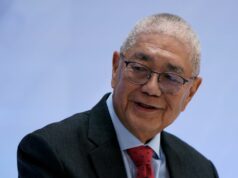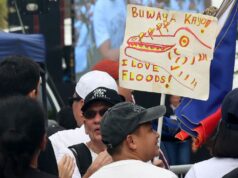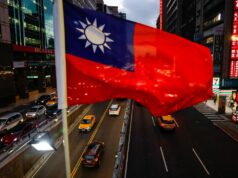Rule of Law in Hong Kong, on enforcement
From our discussion last week (Nov. 18, www.bworldonline.com/rule-of-law-in-hong-kong), we continue with the law enforcement issues of the Hong Kong police.
The issues of the Hong Kong police are three. These are: the extent of the concept of maximum tolerance for civil protests versus violent actions, the number and randomness of the protests, and the lack of clarity in the rules of engagement.
The principle in protest action is that the citizenry are showing their dissatisfaction with the state and are exercising their right of assembly and of expression. They must be given the forum and the latitude for outbursts.
In the past and in many cases in various places, mass actions and demonstrations ended with firing at or into the people. In the 21st century and in one of the freest economies, most visited and well-known cities in the world that is Hong Kong, with global attention, it is understandable and expected that only the usual methods for crowd dispersal are employed, i.e. water cannons, tear gas, pepper spray that do not injure or kill.
If the protests are peaceful, done in public spaces, and do not disrupt (though it may inconvenience) the rest of the population, police can monitor and their presence made to deter disorderly conduct.
But if the protests do not meet the criteria, the police will have to, at the minimum, control the protestors and eventually disperse the crowd. In law enforcement, the gathering of a few to the many is a situation where emotions can run high and passions can translate to actions.
An act done by an individual in a group may lead to crime because there is anonymity in numbers. When one is not held to account for one’s action, it affords impunity. It also spreads to the others because of herd mentality — everyone is doing it.
The protesters in Hong Kong acted with violence. But because of the framework of maximum tolerance for the protests, the police came in too late to stop the damage to property initially, and the threat to the policemen and non-supportive groups eventually. These actions are criminal in nature and when their commission can be attributed, the rules of criminal justice clearly apply.
As Hong Kong is a city with a convenient infrastructure and highly mobile population, that the protests can happen anywhere and at any time adds to the randomness of numbers faced by the police. But the same analysis and conclusions follow from the smallest far-flung protests to the biggest and most central ones.
Recall the previous protests in Hong Kong tagged as the “umbrella movement” in 2014 that were peaceful. Police moved into the crowds when positions were taken up to “occupy” key areas of the city. In 2019, umbrellas are no longer symbolic, passive defense.
The police and government did not, could not, take stronger actions against the violent protestors. They were patient and know that over time, large protest actions are not sustainable. Weekly protests take their toll on the protestors — they are still people who need to eat, to work, and to live. Even with the escalating violence, there was no corresponding escalation in the type of force used by the police.
One reason violence escalates is because of collective frustration and the thinking that it will force action that is not achievable with peaceful means. This line of argument is within the “terrorist or freedom fighter” debate.
Finally, a predictable resort by the protestors was to occupy universities that are traditionally the grounds for dissent of the youth and for student action, familiar territory with the facilities and strategic locations for protests. This move may be the last as the number of protestors and the location and range of the protests are now determinable, their identities knowable to the police and to the families. The police can amass and win the numbers game with their organizational discipline and resources at hand.
The rules of engagement can be considered along the following lines. One is a determination of the legal age that protestors can join mass actions. Can children as young as 14 engage in the full range or are they vulnerable groups that need special care?
Two, this should lead to clarity in the acceptable forms and manners of protests versus any type of violence and their consequences. The default is that anything outside of the rules is allowed as long as the duty to do no harm is observed. Violence is offensive and self-defeating.
The third is to expand the political arena lest the police force bear the brunt of public dissatisfaction. But for this, it is another dialogue on another dimension of the rule of law.



